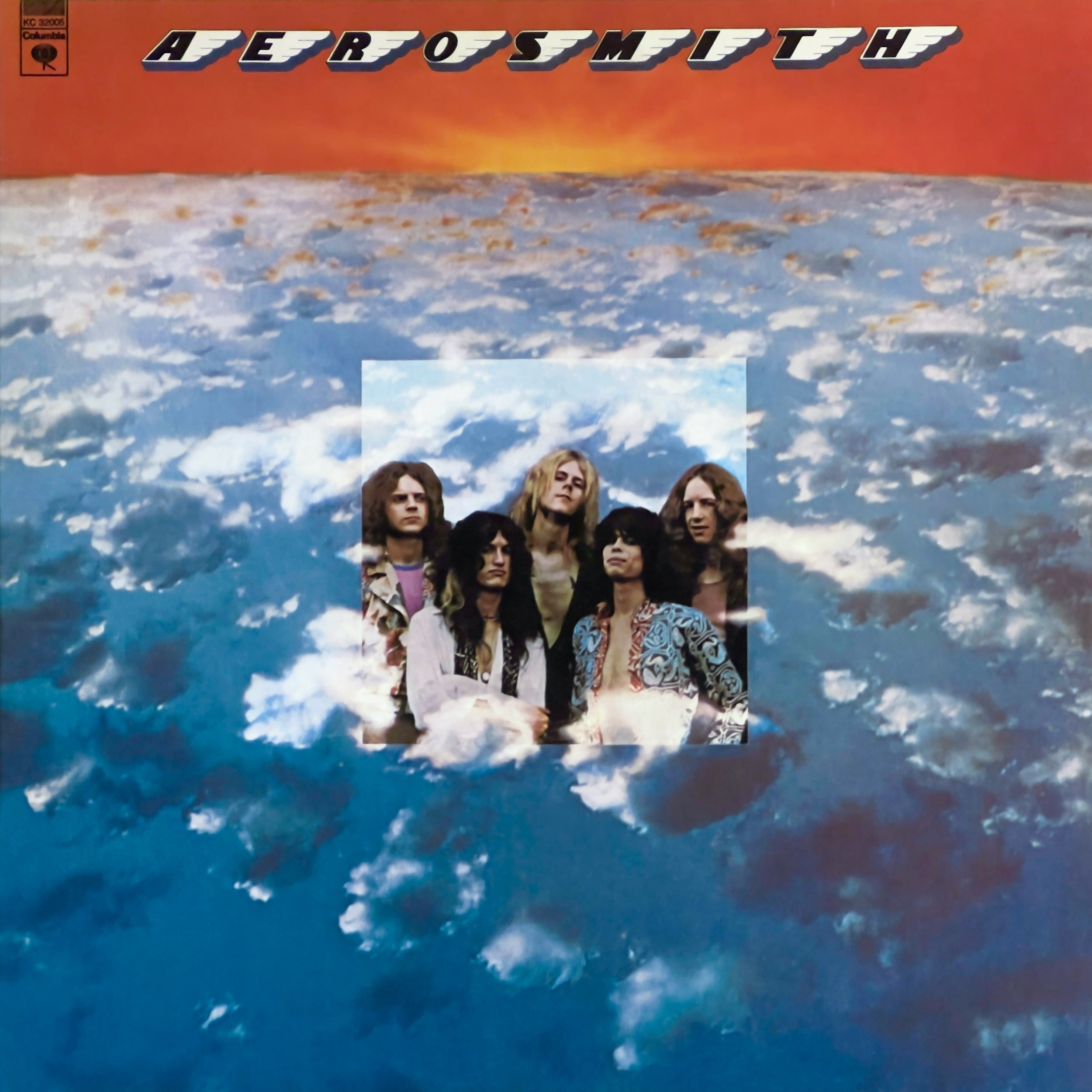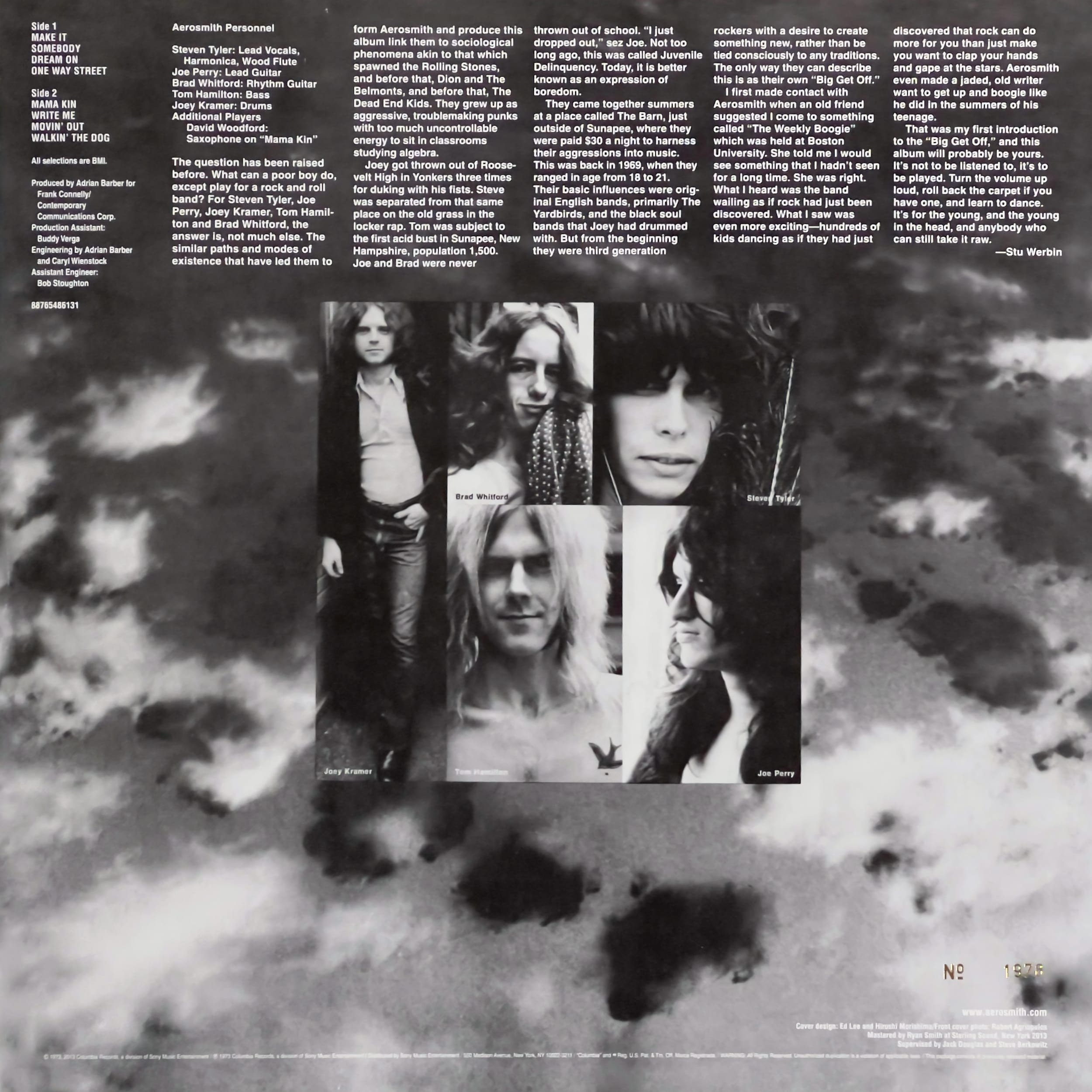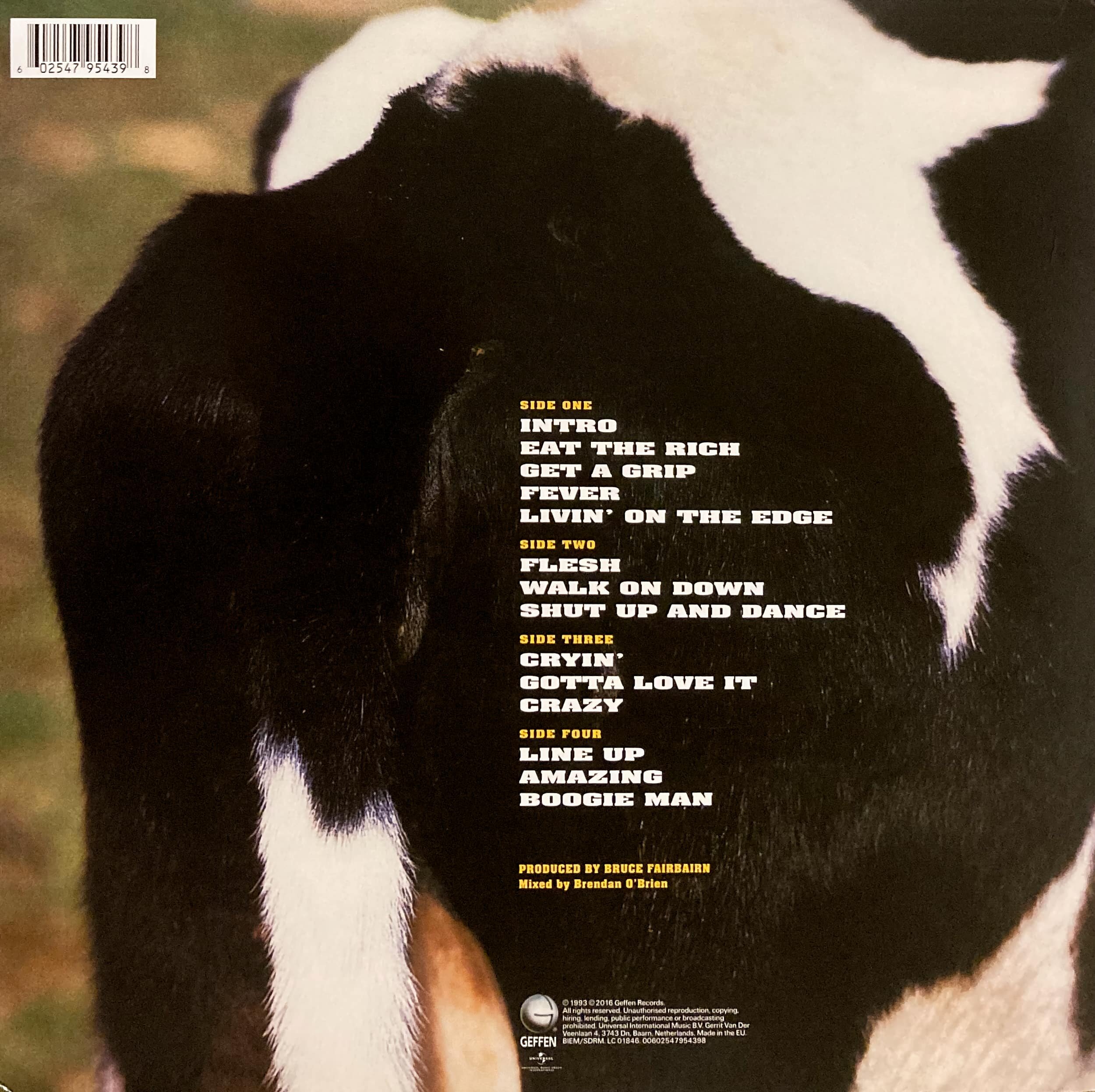Permanent Vacation is one of those uniquely special releases, as it rejuvenated the hard rock legends following years of excess, early 80s lineup instability, and waning popularity. While each Aerosmith album has always featured a few hits, Permanent Vacation, their ninth studio album, proved they were far from being has-beens, as this record is an album experience from the very first note to the last. With the help of producer Bruce Fairbairn, Permanent Vacation would set up a highly successful era for Aerosmith that would also see the Boston rockers and Fairbairn collaborate on 1989’s Pump and 1993’s Get A Grip.
To say Aerosmith staged one of the most remarkable comebacks in rock history would be an understatement, for sales of this 1987 release would exceed 5 million units; a feat not seen since the mid-70s with the release of their renowned Toys In The Attic (1975). While Aerosmith are amongst the most highly skilled musicians, they’re a band that has seemingly always been influenced by the chosen producer, so much so that I’d consider Fairbairn to be an unofficial sixth member of the band for this highly compelling era. His guidance helped them transition into a slicker, radio-ready sound without abandoning the grit and swagger that made them legendary. By fusing hard rock, blues, glam, and a touch of pop, Fairbairn pushed Aerosmith back into the mainstream, helping them reach an entirely new audience as well as those who had been there from the beginning.
While the music is the most important aspect of any album release, the artwork plays a key role. The stark yellow logo atop a black and red hand-drawn background was the type of visual accompaniment that not only suited the band and the music contained within, but it was destined to stand out amongst an extremely solid series of releases from 1987.
As it pertains to the Hi-Res Lossless Apple Music stream, an Apple Digital Master, it’s a solid reproduction with a full-bodied, warm sound that will appeal to many. That said, it’s a little too restrained in the treble region, resulting in a loss of high-note elements. It isn’t bad, but if your system is already midrange and bass-driven, you’ll likely find the absence of high notes to be a little dull. It’s the glassy 80s-era sound that is, ultimately, missing from the Apple Music stream, and while the brittleness of that era can be a tad of a turnoff, negating it completely leaves me wishing I still had my vinyl reissue from 2016, as it simply sounded right.
Heart's Done Time kicks the album off with a unique whale sonic element that quickly delves into an energetic rocker, complete with Aerosmith’s renowned raw energy. Driven by Joe Perry’s sharp riffing and Steven Tyler’s unmistakable snarl, Heart's Done Time has a metallic edge while retaining the band’s bluesy undertones. While it may not be a timeless classic, it delivers the goods and is a highly compelling opening tune.
Magic Touch brings a tad more melodic rhythm to the album that will have you toe-tapping and head-bopping along to this groove-driven number. While single-worthy, it captures the band’s knack for catchy hooks, and Tyler’s vocal performance is seductive in its ability to draw you in.
Rag Doll is one of the album’s biggest hits, and for good reason; it oozes with swing and attitude in a hard rock meets jazzy swagger that has ensured this tune has become a fan favourite.
Simoriah is likely a hidden gem for many fans as it harkens back to Aerosmith’s 70s-era recordings, but it doesn’t quite leave the lasting impression that the album’s strongest cuts do.
Dude (Looks Like A Lady) is where the party’s at and was instrumental in revitalising Aerosmith’s career. It’s pure 80s rock excess, but in the best way possible, as it’s catchy, tailor-made for MTV (a prominent platform during the era), and incredibly memorable. It has, however, been overplayed throughout the years, and there’s undoubtedly some who will be happy to never hear this Aerosmith tune again. Love it or hate it, Dude (Looks Like A Lady) is iconic and is amongst the very best songs Aerosmith has ever recorded.
St. John shifts gears slightly with a moody blues swamp groove-styled tune. There’s no denying the blues have influenced Aerosmith, and this tune harkens back to the 70s-era Aerosmith releases. Still, it remains fresh, timeless, and that’s in part due to the polished 80s production quality that makes this a thoroughly enjoyable album-only tune.
Hangman Jury strips things down with a rootsy, acoustic-let arrangement that maintains the blues-infused aspects of St. John. Yes, the song is a slow-build, but as soon as all elements enter the mix, you’ll find yourself toe-tapping and head-bopping along to this incredible mid-tempo number.
Girl Keeps Coming Apart returns the album to a high-energy rock vibe. Interestingly, this tune sounds a little more like a jam, whereby the band were simply letting loose in the studio. The frantic pace, combined with Tyler’s vocal acrobatics, Perry’s fiery guitar licks, and some incredible brass instrumentation, gives this song an undeniable charm.
Angel changes the mood dramatically with one of the greatest power ballads ever written and recorded. The lush and emotionally charged presence of the song made it undeniably radio-friendly, but along the way, it also became one of the most enduring love songs in the history of recorded music. While it interrupts the record’s sequencing slightly, it more than makes up for it by being one of Aerosmith’s most defining hits.
Permanent Vacation is a playful number that’s a little quirky. While there’s nothing fundamentally wrong with that, and the song plays into a vacation-styled energy, it’s one of the more uninspired tracks on the album. Unfortunately, the exotic flourishes and campy chorus don’t quite hit the mark, resulting in a somewhat underwhelming title track.
I'm Down is a Beatles cover, and while Aerosmith didn’t stray too far from the original compositional style, they injected it with their brand of swagger and hard rock that modernised the song, making it relevant to a new era of music lovers to explore and incorporate into their own zeitgeist.
The Movie closes the album with a stunning instrumental number that leans heavily on atmospheric elements, layered guitars, and a compelling rhythm. While not a traditional rocker, The Movie is an ideal song to finish the album on, for it not only encourages you to reflect on the music that you’ve just heard, but it will also compel you to play the record again.
Permanent Vacation was more than just a comeback album; it was a second coming as the band embraced slicker production standards that would contribute to their most successful era. While some may suggest that Aerosmith sold out, that’s a lazy take; they simply moved with the times to create some of their most memorable tunes. Look at it this way: when you can release a compilation as incredible as Big Ones, that specifically highlights the Fairbairn production/Geffen release era, you’re doing something right. As an album on its own, Permanent Vacation stands amongst the very best releases of the 80s, particularly those from 1987 and is worthy of inclusion in every hard rock fan’s library.


























